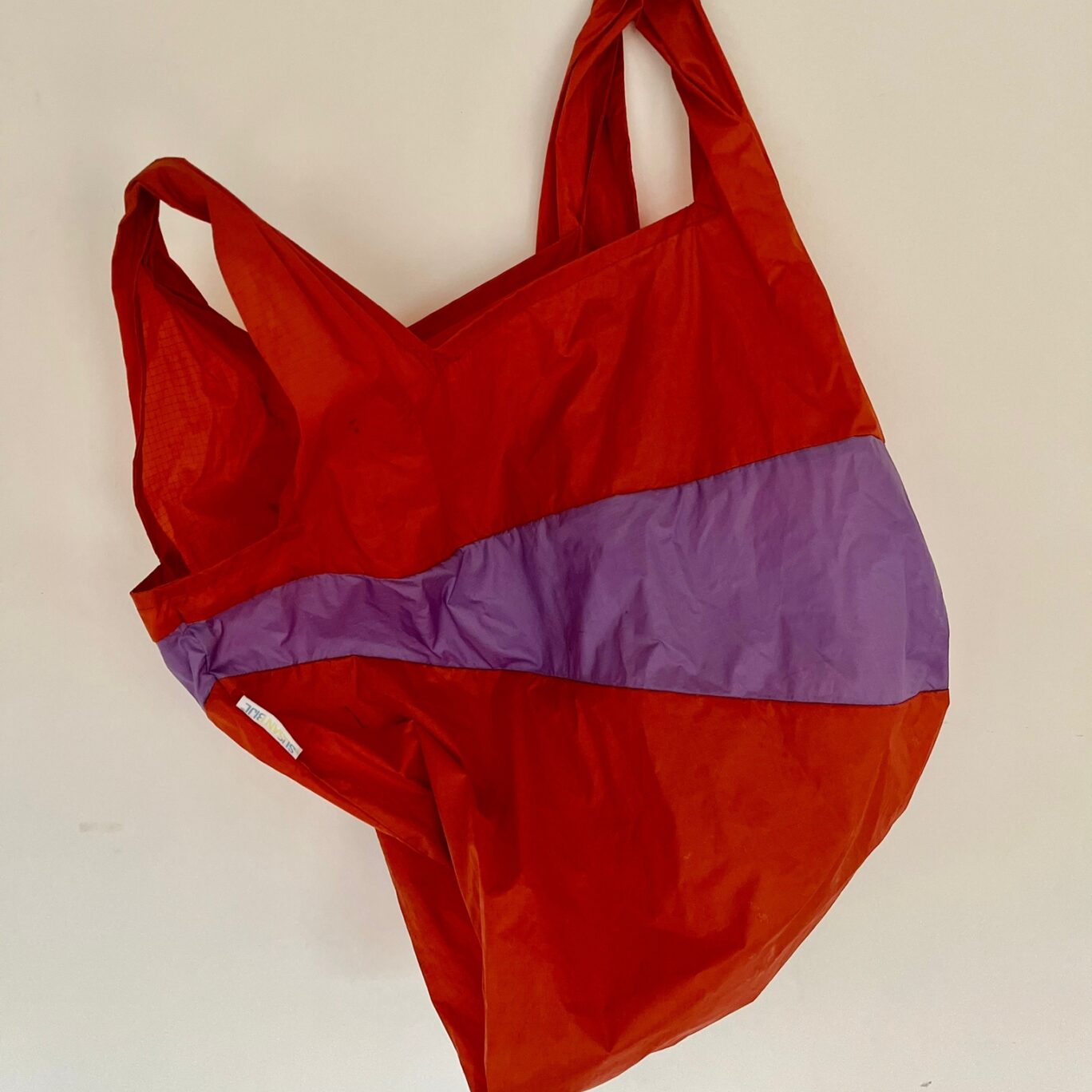Registration refused
In 2022, Bijl applied for a European trademark registration for the appearance of the bag. The designer opted to register a neutral, black and white version of the bag; an understandable choice because it allows you to claim the design in its most basic form without the limitation of specific colours. However, the European trademark office EUIPO refuses to register the trademark.
Regular carry bag
On January 3, 2023, the trademark office announced that it does not consider the trademark distinctive. “The sign consists of a normal carry bag with a black diagonal stripe across it”. According to EUIPO, that’s not unusual in the bags industry.

Acquired distinctiveness
“Yes, but my bag is very well known”, Bijl argued. The bag has acquired a distinctive character through long and intensive use. Everyone recognises the Susan Bijl bag these days, don’t they? To demonstrate this, the designer sent newspaper articles, among other things, about her collaboration with Eastpack, a list of points of sale and photos of the product. But it was all to no avail.
No proof
According to EUIPO, Bijl has not provided proof that the European public will see this simple bag design as a trademark. The documents do not contain information about market share or advertising costs. There is also no evidence of the geographical distribution and duration of use of this mark in the European member states. The trademark office maintains that the design cannot be registered as a European trademark for shopping bags.
Overambitious?
It’s a tough blow for this original design by Susan Bijl. But perhaps a European trademark registration was also a bit ambitious. It’s common knowledge that this kind of simple product design is very difficult to register as a trademark in Europe. It is only successful if you demonstrate that you are known throughout the European Union and that it has acquired distinctiveness. The fact that EUIPO rejected Bijl’s submitted evidence gives rise to the suspicion that there is little or no evidence of use and acquired distinctiveness in Europe. Being very well-known in the Benelux is not enough.
Design registration
Nowadays, there are better routes of protection than trademark law for these minimalist-type icons. It’s better to consider design registration as the hefty requirement of distinctive character does not apply. However, a look at the European design register shows that Bijl does not own the design right to the bag, which is a shame because it’s not something that can still be fixed. The condition for design protection is that the design must be new. If you are already on the market, it’s too late to protect the design.
Legal protection
It’s a well-known phenomenon that start-ups often focus on developing and marketing their new product. Understandably, attention (and money) for the best legal protection sometimes falls short during that initial phase, which can, unfortunately, be fatal for design law.
Copyright
But is Bijl’s design completely unprotected? No, fortunately, it isn’t because there are always copyrights. Copyright protects the appearance of an original work. There is no action required for this. The work is automatically protected at the moment of creation, no registration needed. So even though the design of Bijl’s bag is very simple and minimalist, it probably is, according to Dutch law, sufficiently original to fall under copyright protection. But to effectively combat counterfeiting, it would have been very useful for Bijl if she could also have obtained design or trademark protection for this design.
Bas Kist



